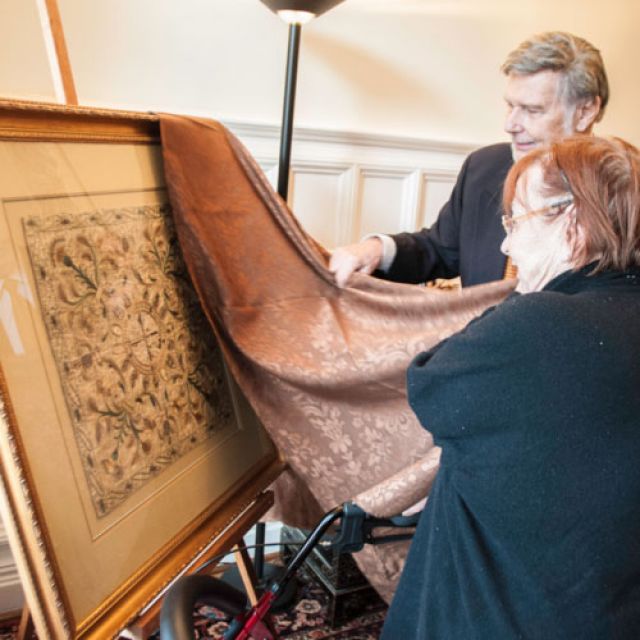For a small sum, Smith bought the embroidered cloth from a country antique store just outside of London, Ont. She cleaned it up and discovered a beautifully embroidered chalice veil with gold and silver silk threads. She immediately knew she had stumbled upon a fragment of Canadian history.
With the help of the Jesuits, Smith has managed to trace its origins.
Various experts had trouble placing it, but the archivist for the Ursuline Sisters in Quebec immediately knew it was theirs. In the 1630s the Ursulines ran a workshop in Quebec where the French sisters taught Mohawk girls to sew and embroider. A careful inspection of the stitch work reveals the sisters started the intricate embroidery, but a student finished it.
At that point in Canada’s history, Jesuits were almost the only priests in New France and the chalice veil was certainly destined for Jesuit use on the missions — perhaps at Sainte-Marie in what eventually became Ontario.
“We need to find more of these things. They need to be brought out,” said Smith, a retired University of Waterloo staffer who helped establish the university’s computer systems.
Smith had no second thoughts about her decision to give the rare find to the Jesuits.
The chalice veil is more than pretty and old, said Jesuit historian and archivist Fr. Jacques Monet. It represents the work of the first nuns in the history of the Catholic Church who were sent out of their cloister to work among the people. The sisters were, like Jesuits Jean de Brebeuf and his companions, on a mission to found a society in North America based on Christian ideals.
“It’s meaningful, very much, for Jesuits,” Monet said of the artifact. “It’s also meaningful for the whole Church.”
The framed chalice veil will be kept at the Jesuit curia at 43 Queen’s Park Cres. E. in Toronto.


